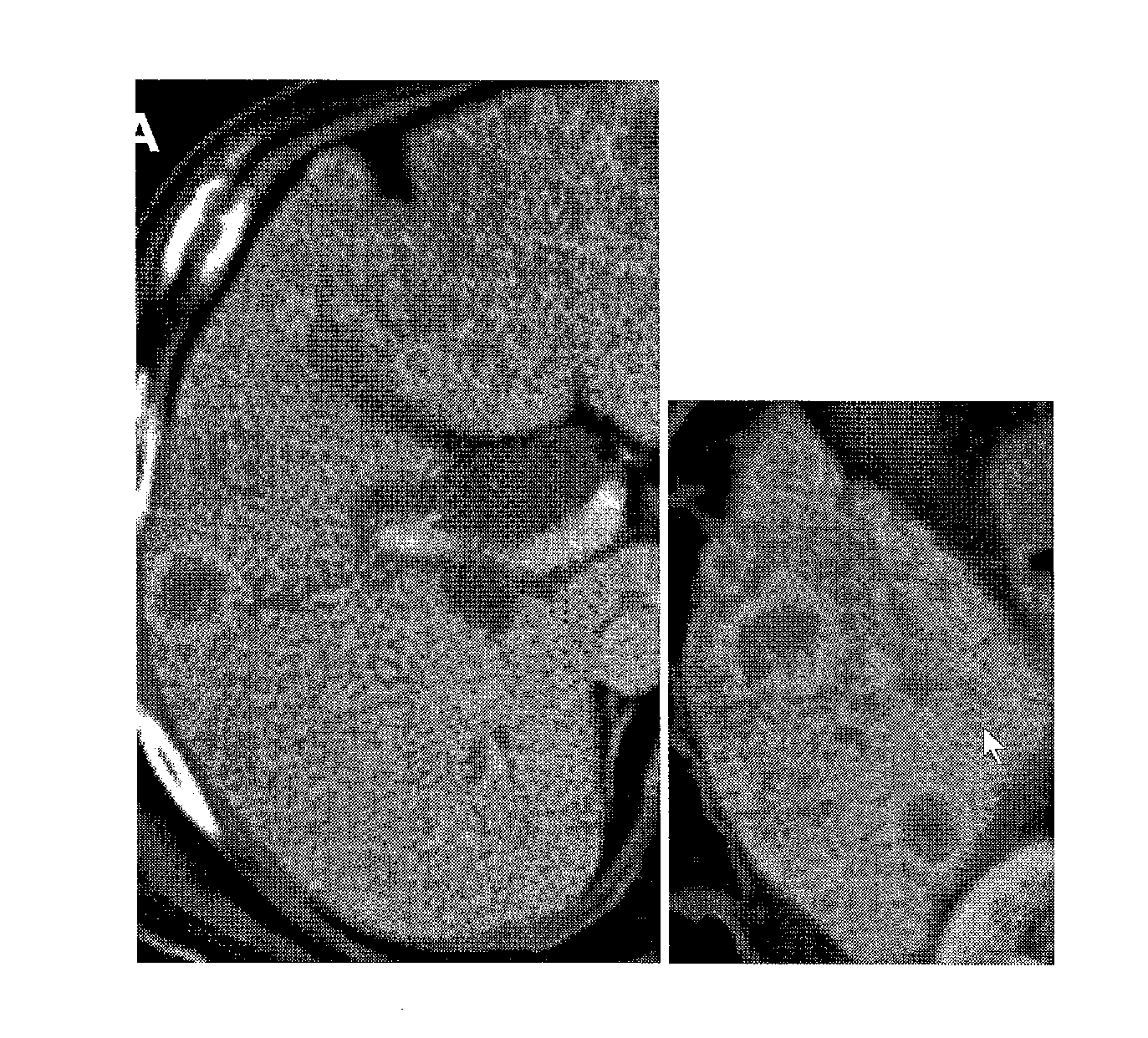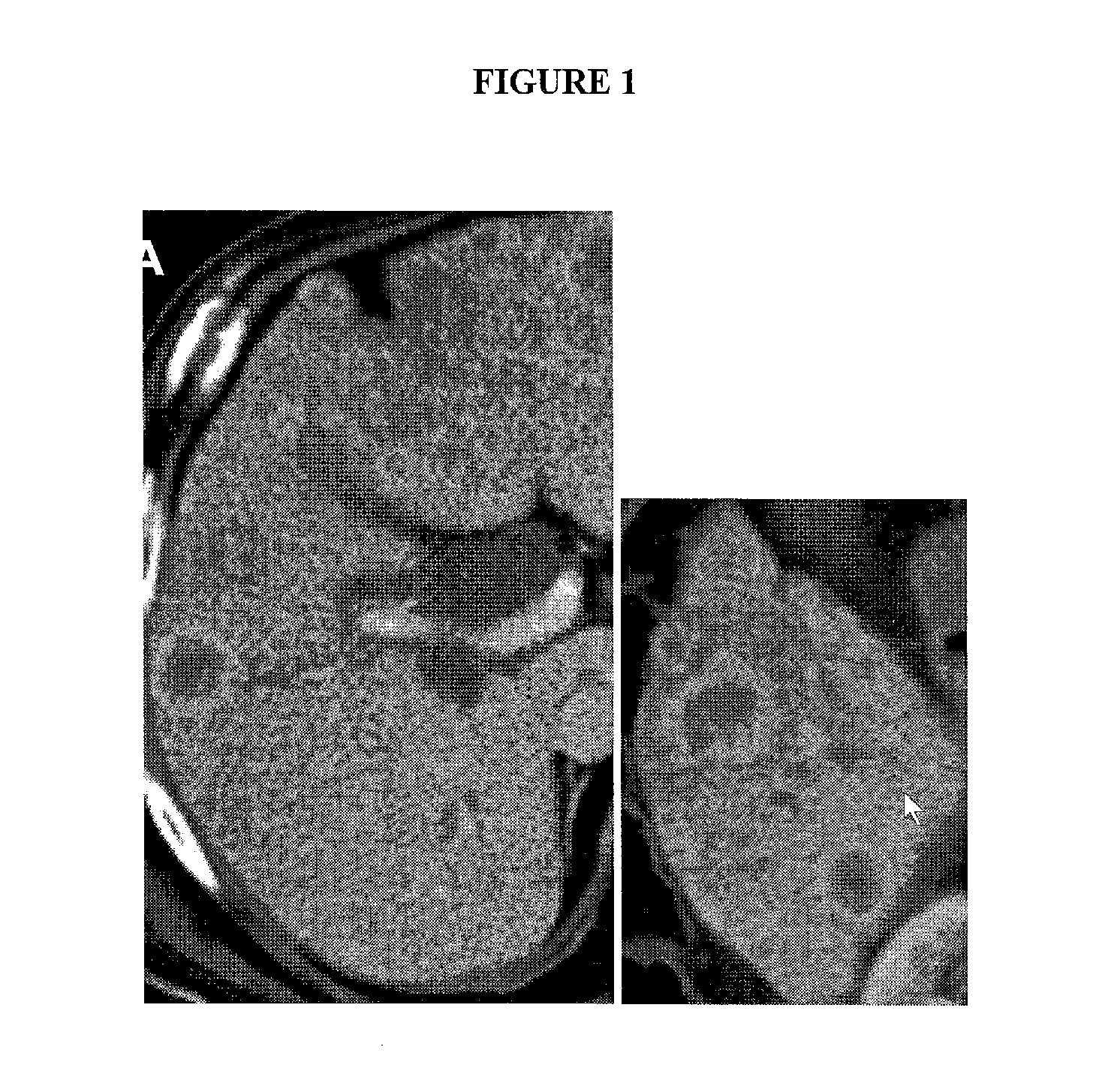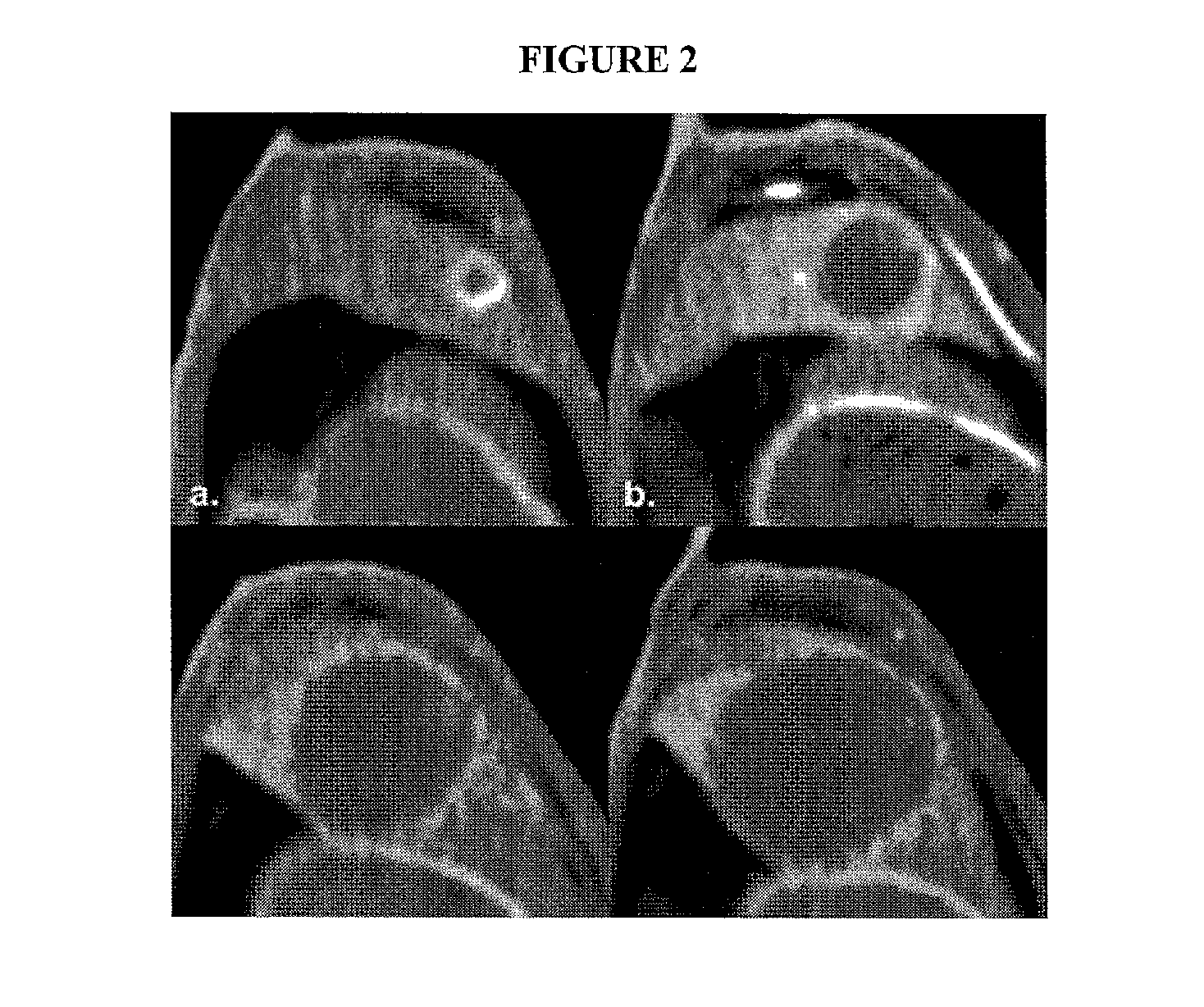Targeted treatment of anerobic cancer
a cancer and anerobic technology, applied in the field of cancer treatment, can solve the problems of producing greater damage or killing of cancerous cells, and achieve the effects of prolonging the life of patients, increasing quality of life, and reducing the risk of cancer
- Summary
- Abstract
- Description
- Claims
- Application Information
AI Technical Summary
Benefits of technology
Problems solved by technology
Method used
Image
Examples
example 1
Comparison Study on Hepatocellular Rat Model Treatment Using Arterial Embolization and Embolization Combined with Anti-Glycolytic Agents
Purpose:
[0221]To determine if anti-glycolytic agents (AG) combined with transarterial embolization (TAE) improves treatment of an N1-S1 tumor model implanted in Sprague-Dawley rat livers.
Methods:
[0222]The animal experiments were approved by the Institutional Animal Care and Use Committee. Subcapsular implantation of N1-S1 hepatoma in the liver after laparotomy was carried out in Sprague Dawley rats. 10-15 days later, a laparotomy and retrograde placement of a catheter into the gastroduodenal artery was performed, the following different agents of interventional treatment were injected into the hepatic artery on 5 different treatment groups: 1) Control (n=5, 1 ml normal saline); 2) TAE (n=4, 10 mg 50-150 μm polyvinyl alcohol (PVA) particle in 1 ml normal saline), 3) TAE+Bumetanide (n=5, 10 mg PVA in 1 ml AG-B (Btunetanide)); 4) TAE+AG-F (ferulic acid...
example 2
Additional Comparison Study on Hepatocellular Rat Model Treatment Using Arterial Embolization and Embolization Combined with Anti-Glycolytic Agents
Purpose:
[0225]To determine if anti-glycolytic agents (AG) combined with transarterial embolization (TAE) improves treatment of an N1-S1 tumor model implanted in Sprague-Dawley rat livers.
Methods:
[0226]The animal experiments were approved by the Institutional Animal Care and Use Committee. Subcapsular implantation of N1-S1 hepatoma in the liver after laparotomy was carried out in Sprague Dawley rats. 10-15 days later, a laparotomy and retrograde placement of a catheter into the gastroduodenal artery was performed, the following different agents of interventional treatment were injected into the hepatic artery on 4 different treatment groups: 1) TAE (n=4, 10 mg 50-150 μm polyvinyl alcohol (PVA) particle in 1 ml normal saline), 2) TAE+Bumetanide (n=5, 10 mg PVA in 1 ml AG-B (Bumetanide)); 3) TAE+AG-F (ferulic acid) (n=5, 10 mg PVA+30 mg AG-F...
example 3
DCE-MRI with a Biodegradable Macromolecular Contrast Agent Reveals Anti-Angiogenic Effects of Bumetanide in a Colon Cancer Model
[0228]Objectives:
[0229]The FDA approved drug, bumetanide, is an inhibitor of Na+-K+-2Cl—(NKCC1) cotransporters in the cell. Although it is not traditionally used in cancer therapy, it is possible that it may work to reduce the proliferation and migration of tumor and cells, while also enhancing susceptibility to apoptotic mechanisms in the presence of chemotherapeutics. The efficacy of bumetanide in cancer treatment was evaluated in an investigational study, described in the following, that utilized DCE-MRI to assess its potential anti-angiogenic effects.
[0230]Materials and Methods:
[0231]Dynamic contrast-enhanced (DCE) MRI is a non-invasive imaging technique that is able to quantify the anatomical and physiological progression of tumor angiogenesis in response to a variety of different cancer therapies. In order to allow for the safe use of macromolecular c...
PUM
| Property | Measurement | Unit |
|---|---|---|
| diameter | aaaaa | aaaaa |
| time contrast curves | aaaaa | aaaaa |
| diameter | aaaaa | aaaaa |
Abstract
Description
Claims
Application Information
 Login to View More
Login to View More - R&D
- Intellectual Property
- Life Sciences
- Materials
- Tech Scout
- Unparalleled Data Quality
- Higher Quality Content
- 60% Fewer Hallucinations
Browse by: Latest US Patents, China's latest patents, Technical Efficacy Thesaurus, Application Domain, Technology Topic, Popular Technical Reports.
© 2025 PatSnap. All rights reserved.Legal|Privacy policy|Modern Slavery Act Transparency Statement|Sitemap|About US| Contact US: help@patsnap.com



